A close relative of radish and radish, a culture undemanding to growing conditions, which is used in cooking, cosmetology, and folk medicine, is turnip. In Russia it was called the second bread. It was believed that if the turnip does not spawn, then the year will be hungry.
The benefit and harm to the health of the root crop is due to its chemical composition, which contains a huge amount of vitamins, minerals and other substances. Turnip can be used fresh, prepared from it salads, side dishes, juices. Vegetable dishes are useful for diabetes, atherosclerosis, gout, polyarthritis, and obesity.
Material Content:
- 1 Health benefits of turnips
- 2 Benefits of Turnip Juice
- 3 Fresh turnips are a source of fiber
- 4 Turnip salads - cleansing the body of toxins
- 5 Turnip for diabetes
- 6 Lowering cholesterol
- 7 Turnip during pregnancy
- 8 The benefits of losing weight
- 9 The benefits of yellow, black, white turnip
- 10 Harm and contraindications
Health benefits of turnips
The root crop contains substances necessary to maintain the normal functioning of the human body.
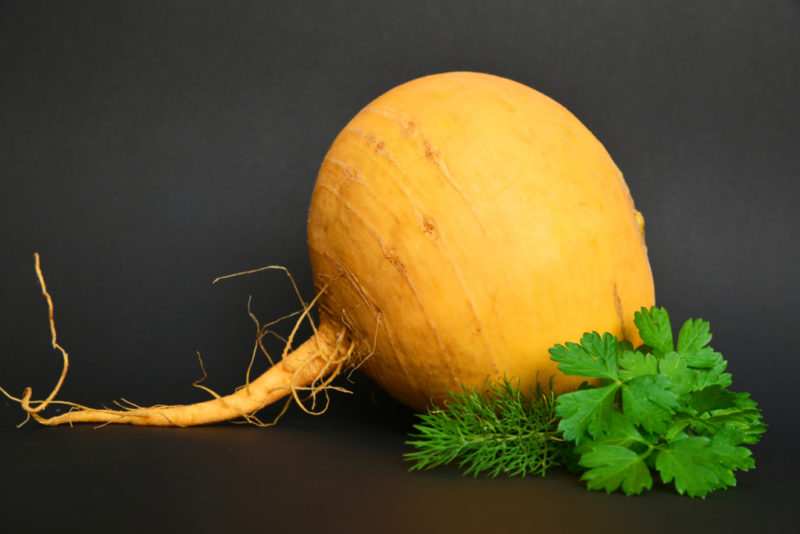
In a chemical analysis, it was found that turnip contains:
- vitamins A, B1, B2, C, E, P, PP;
- mineral substances (potassium, calcium, phosphorus, etc.);
- glucoraphanin;
- organic acids;
- alimentary fiber.
Turnip is a valuable source of vitamins and minerals that are necessary for the normal functioning of the human body.
The calorie content of the dietary product is only 30-32 kcal per 100 grams. Turnip is useful in various systemic diseases of internal organs. The active components contained in it stimulate the metabolic processes in the body, help strengthen the immune system. The root crop can be included in the diet of children and pregnant women.
The benefits of turnip for the human body:
- normalizes intestinal motility;
- stimulates the production of gastric juice;
- relieves pain in the joints;
- interferes with the formation and development of cancer cells;
- has expectorant properties;
- removes excess fluid, waste and toxic substances;
- destroys pathogenic microorganisms;
- cleanses and disinfects blood;
- improves the functioning of the reproductive system.
These are not all the beneficial properties of a plant. If you regularly eat a little root, or use dishes prepared from it, you can significantly improve the appearance, condition of the skin, nails, hair. Turnip is useful for diseases of the cardiovascular system, digestive organs, pathologies of the musculoskeletal system (breaks down salt deposits on the joints).
Benefits of Turnip Juice

All useful properties are stored in juice made from root vegetables. It is recommended to drink a glass of freshly squeezed drink daily in the morning on an empty stomach to start the work of the organs of the gastrointestinal tract. To improve the health status, patients suffering from polyarthritis, intestinal atony should take 100 g of juice diluted with a tablespoon of natural honey 4 times a day before meals.
Fresh turnips are a source of fiber
Vegetables are eaten in various forms. The turnip is marinated, stewed, baked, boiled. But fresh root vegetable is considered the most useful, because it contains dietary fiber, which is necessary for the normal functioning of the digestive system. Turnip can be grated, or cut into cubes. To remove the characteristic bitter aftertaste, pour vegetable over boiling water. To improve the taste of the root crop add honey, sour cream, lemon, raisins.
Turnip salads - cleansing the body of toxins
Read also: how to take flax seeds to cleanse the body
The purifying properties of turnips have long been known. With the regular use of dishes from the root, harmful substances are eliminated from the body, as a result of which the person's health and well-being improves. Salads prepared from vegetables are not only healthy, but also delicious.
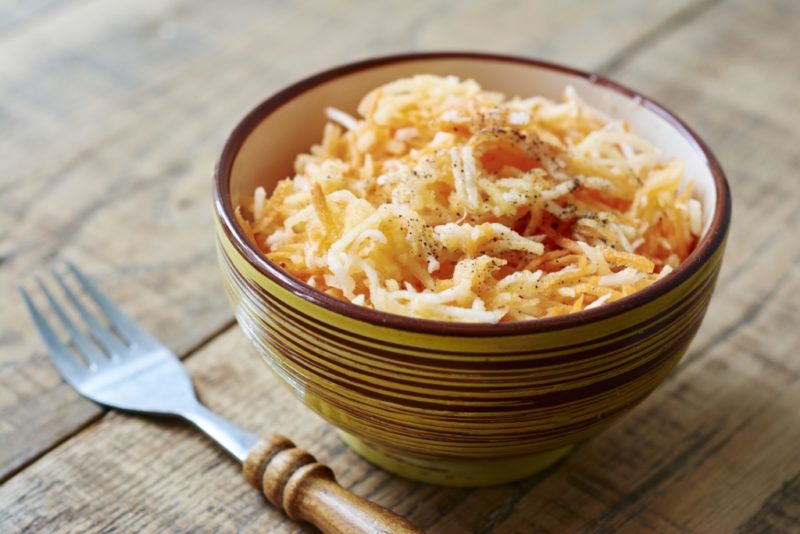
- Curd. Cut turnips into cubes, celery into cubes, add well-wrung, mashed curd. Finely chop the parsley, dill and green onions, pour into a bowl of salad, mix. Lemon juice is used as a dressing.
- With tops. Dice the turnip and carrots, onions - rings, tops - chop. Put the ingredients in a glass bowl, add olive oil, a few drops of lemon juice, salt to taste.
- Vitamin. Grate a sour apple and turnip. Cut the pulp of pumpkin into cubes. Season the salad with liquid honey.
It is advisable to eat turnip dishes fresh. For cooking, use healthy, solid, dense root crops. If you grow a vegetable yourself, make sure that it does not overripe: its properties and taste are lost.
Turnip for diabetes
If you use the turnip correctly, it will help normalize blood sugar levels. But patients with a diagnosis of diabetes should consult their doctor before introducing this product into the diet. The vegetable contains simple carbohydrates.
Lowering cholesterol
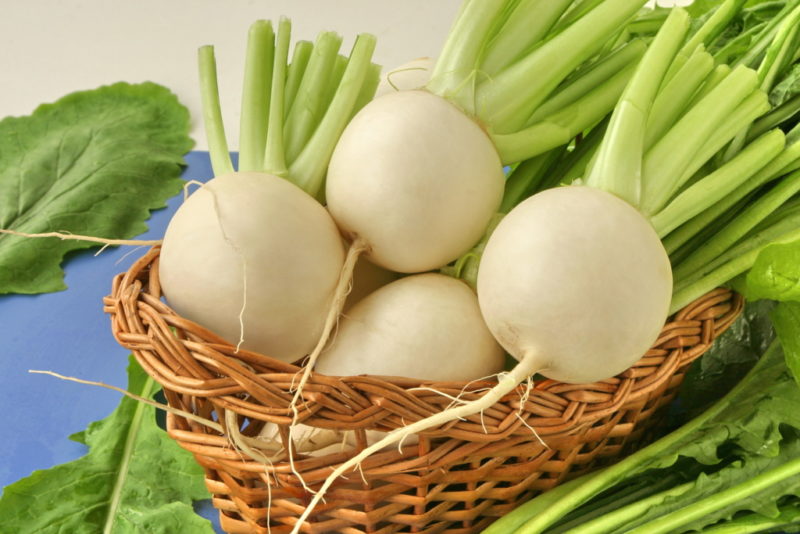
Turnip and dishes prepared from it are useful for atherosclerosis and for the prevention of this disease. The substances contained in the vegetable contribute to the purification of blood vessels from plaques, reduce the level of bad cholesterol, helping to increase the lumen of blood vessels.
Turnip during pregnancy
Pregnant women and breastfeeding young mothers are also encouraged to introduce turnip dishes into their diet. During the waiting period for the baby, the body needs such trace elements as manganese, iodine, phosphorus, copper. They help to form the internal organs of the baby, maintain a healthy mother's health. Turnip contains these substances. In addition, it is low in calories. Turnip can be used as an antiviral, antibacterial agent.Thanks to the wound healing properties, the vegetable is useful for nursing mothers, and helps to heal microcracks and damage to the nipples.
The benefits of losing weight
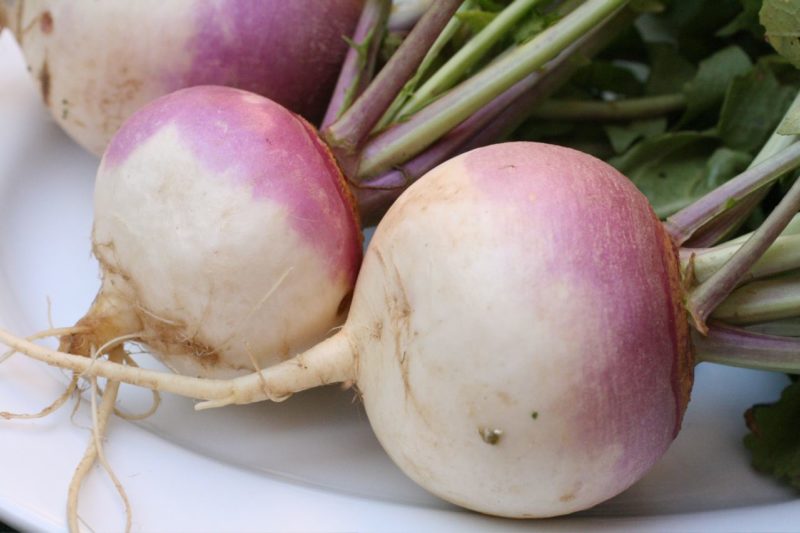
Nutritionists advise using turnips to those who want to adjust their weight, lose a few pounds without harm to health. The root crop consists of 90% of water. It can be prepared in many ways. Dishes are tasty and aromatic. For example, baked turnip can be replaced with a potato side dish. It can be salty, if you add salt, spices and herbs, or sweet, if combined with honey, dried fruits. Salads, side dishes from root vegetables go well with meat dishes.
The benefits of yellow, black, white turnip
Once a turnip was very popular, but over time it began to be replaced with potatoes and other vegetables. Today, she is not a frequent guest on the table, but in vain. Turnip is an affordable, tasty, healthy root crop, from which you can cook various dishes.
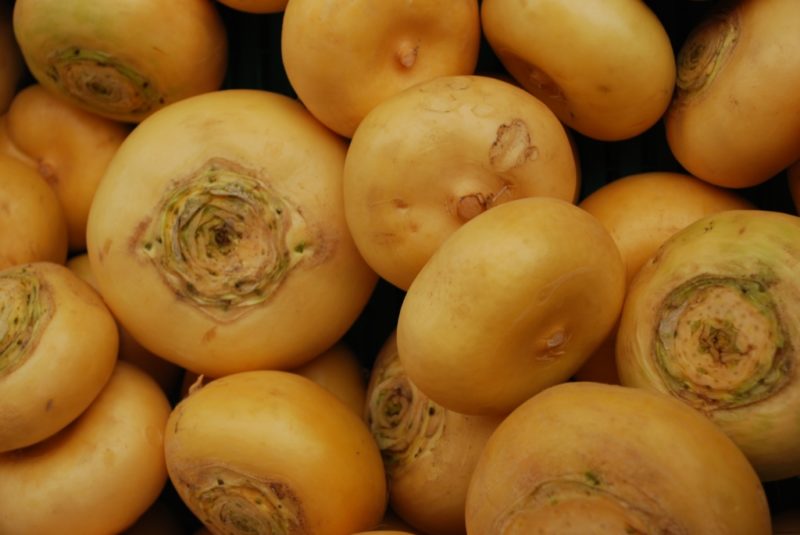
- Yellow turnip most popular, has general strengthening properties, enhances immunity. With it, you can get rid of acne, eliminate skin imperfections, and solve the problem of bleeding gums.
- Black turnip delicious with honey. Dessert will help to cope with dry cough, toothache, has expectorant, anti-inflammatory properties.
- White turnip normalizes metabolism, helps to eliminate harmful substances. Dishes from this root crop are ideal for those who want to lose weight.
Steamed, boiled, pickled, cooked in the oven, slow cooker, on the stove - turnips are tasty and healthy for children and adults. It will help to cope with vitamin deficiency, colds, strengthen immunity. Add it to your diet and you will notice a significant improvement in health. Properly prepared dishes are distinguished by excellent taste. Garnish - for meat, turnips with honey - for dessert.
Harm and contraindications
Despite all the useful properties, you need to use the vegetable with caution. 200 grams of turnip per day is enough to fill the need for vitamins and minerals. It should be borne in mind that raw root crops cause flatulence, heartburn, exacerbation of kidney diseases, allergic reactions.

Turnip and dishes from it are contraindicated for such violations:
- chronic diseases of the digestive system (colitis, gastritis, ulcer);
- severe diabetes mellitus;
- pathology of the kidneys and urinary tract;
- nervous disorders;
- problems in the thyroid gland.
After using the plant in the above cases, sharp abdominal pain, nausea, vomiting, and weakness can occur. If you eat meals regularly and in large quantities, problems may arise in the functioning of the excretory and digestive systems.
If you adhere to the recommendations, properly prepare turnips, consider contraindications, it will bring nothing but benefit. This is a unique product from which you can cook a lot of delicious, and most importantly healthy dishes. In cooking, not only root crops are used, but also the terrestrial part of the plant.












